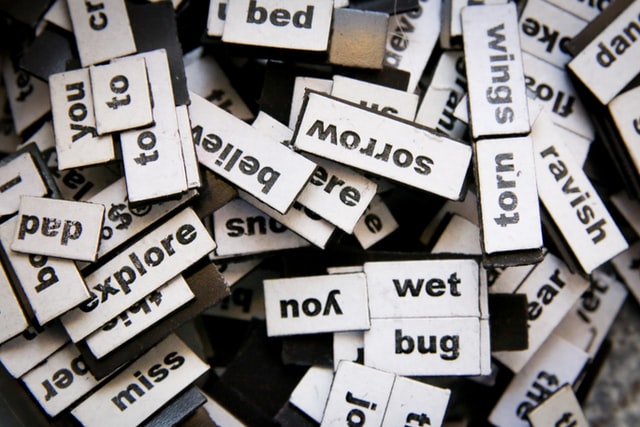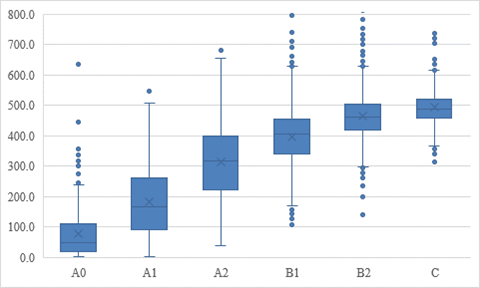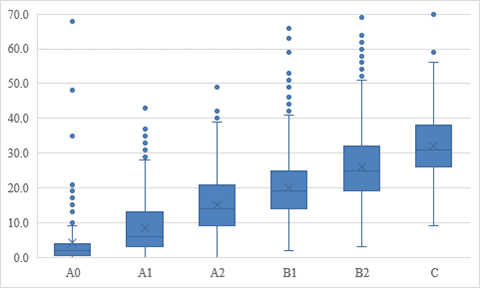Syllable Count – What Does the Number of Syllables in a Text Show?
23 June, 2022

A syllable is a single, unbroken sound (phoneme) that is found in a written or spoken word and is often referred to as ‘beats’ in words. They can be made up of either one vowel sound or a combination of vowels and consonants.
When it comes to communicating in a language, syllables help us with pronunciation and help us to be understood by others. For that reason, they are vital when speaking any language such as English, learning to read and write at school or learning English as a Second Language.
Syllables can also help us understand the readability and complexity of a text.
In this short post, we will explore the importance of syllables, how the number of syllables in a word or sentence can vary according to a variety of factors and point out a few of the concerns of using syllable counts to assess language complexity.
We will also explain the six metrics that Text Inspector uses to assess syllable counts, statistics and in turn, readability.
What are monosyllabic and polysyllabic words?
First, let’s start by looking at how the number of syllables in a word or sentence can vary.
Monosyllables
Words such as ‘cat’, ‘jump’ and ‘run’ are monosyllabic. They contain just one syllable and are of great interest to linguists studying phonology (the study of sound in language) and morphology (the study of the internal structure of words).
Monosyllables come in two ‘flavours’- lexical monosyllables (those that describe objects and actions) and grammatical monosyllables (those words like ‘the’ and ‘of’ that are used for grammar but don’t carry any semantic (meaning) content)
Polysyllables
A word that contains more than one syllable is called polysyllabic. For example, the word ‘english’ contains two syllables: ‘eng-lish’ whereas the word ‘linguistics’ contains three: ‘lin-guis-tics’.
What do syllables tell us about a text?
The number of syllables in a word, sentence or text can give us an insight into the complexity of the language used.
By measuring syllables, we can attempt to understand how skilled the person is at using the language, whether the language user is a child, a university student, an academic or even a second language learner.
“The fewer syllables the words have (on average) in the text, the ‘easier’ the text. Shorter words with fewer syllables give the mind much more to think about (Flesch, 1979, p. 22).”
For example, start by thinking back to the type of words that very young children use when they are first developing language. This includes words like ‘mum’ ‘dad’ ‘cat’ ‘dog’ ‘ball’ and ‘fish’. Then later as our skills progress, we move onto more complex words like ‘bottle’, ‘football’ and even three-syllable words like ‘bicycle’.
The fact that they use these simple, one-syllable words at this stage suggests that syllables could be a good indicator as to the complexity of language use.
However, some critics suggest that the English language is full of monosyllabic words and this doesn’t make the language any less creative or expressive.
“Small words can be crisp, brief, terse–go to the point, like a knife,” said Ecclesine in his paper ‘Advice to Scientists–in Words of One Syllable’ published in the American Journal of Economics and Sociology (1965), “They have a charm all their own. They dance, twist, turn, sing. Like sparks in the night, they light the way for the eyes of those who read. They are the grace notes of prose.”

What about language complexity?
Nonetheless, the argument above doesn’t necessarily address the issue of language complexity. A written or spoken text can be linguistically complex and suggest highly skilled language use without being aesthetically pleasing.
It’s also important to point out that second language learners don’t develop their skills in the same way as young native speakers. Although beginner second language learners will learn the basic nouns and phrases of a language when they first get started, these words can contain one, two, three or even more syllables.
This could contradict the idea that syllables can shed light on the language level of a speaker or writer.
For example, the EF Languages download of the 1000 Most Common Words in English contains words such as ‘administration’ (five syllables), ‘behaviour’ (three syllables) and ‘development’ (four syllables). This isn’t the same for all languages, however. Certain languages such as Japanese and German feature a large percentage of words with multiple syllables.
However, according to recent research by the British Council entitled ‘Researching Lexical Thresholds and Lexical Profiles Across the Common European Framework of Reference for Reference for Languages (CEFR) Levels Assessed in the APIS Text’, syllable counts and lexical complexity do have a relationship with the CEFR level of a user.
“…lexical complexity changes systematically as the CEFR level of learners increases…in the study, 26 metrics were significant across all CEFR boundaries, including measures of text length (sentence, token and type count), and metrics of lexical sophistication (syllable count and number of words with more than two syllables). Fourteen of the 26 metrics represent vocabulary use. One metric of text complexity (VOC-d) was also significant across all thresholds.”
As suggested above, a higher number of average syllables correlates with higher CEFR levels. Therefore, despite certain limitations, using syllables in words, sentences and texts can help us shed light on the complexity of a given text and suggest its CEFR level.
What did the British Council study discover about syllables?
The study above used Text Inspector to analyse students’ written work in the British Council’s Aptis Writing Test (benchmarked to the CEFR), looking at factors such as lexis and metadiscourse.
It discovered that 26 of the metrics used in Text Inspector including syllable count, number of words with more than one syllable and text length did indicate the complexity of the language used and CEFR level.
The findings also correlated highly with other metrics used in the analysis such as token count and sentence count.
“The average number of syllables increases with CEFR band, from 77.87 at A0 to 493.39 at C-level. The largest increase is bands A1–A2, which sees a jump from 182.49 to 312.84. Minimum values for levels A0–A2 are low (2–40), which rise substantially to 108 at B1 level, 141 at B2 level and 315 at C level.”
This suggests that the average number of syllables jumps most significantly between the elementary levels of English language learning, then continues to grow as the learner’s language skills improve.

When it comes to words with two syllables, the study observes a similar increase.
“The second syllable-related metric which discriminates across all thresholds is the average number of words with more than two syllables. A0 responses contain an average of 4.13 words with more than two syllables, rising to 8.49 for A1 responses. C-level responses contain an average of 31.93 words with more than two syllables. Again, there is no overlap at the 95% confidence intervals.”

Conclusion
Syllables break down a word into phonemes and can occur by themselves or with other syllables. By analysing the syllable count of a word, sentence or even text, we can shed light on the complexity of the language used and the CEFR level of the user.
Syllable counter: calculate the number of syllables in a word or text with Text Inspector
Text Inspector uses a variety of metrics to calculate the number of syllables in a word, phrase or text to understand the CEFR level, readability and complexity of a text. This includes:
- Syllable count
- Syllables per 100 words
- Words with more than 2 syllables
- Words with more than 2 syllables – percentage
- Average syllables per sentence
- Average syllables per word
Try the Text Inspector tool today or find out more about our affordable subscription options here.
Share
Related Posts

How to Analyse a Text in English with Text Inspector
23 June, 2022
Whether you’re interested in understanding the structure and complexity of a text, you want to […]
Read More ->
What is Readability and How Does It Work?
24 June, 2022
Readability refers to how easy it is to read and understand a text, depending on […]
Read More ->
Conquer CEFR Levels: The Ultimate Explanation of Language Proficiency
23 June, 2022
If you’ve learned an European language, you’re almost certain to have seen the CEFR Levels […]
Read More ->